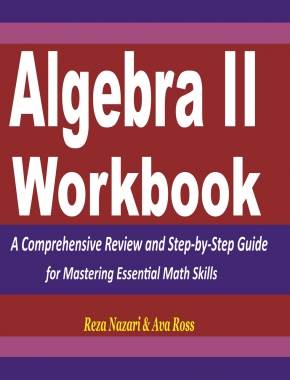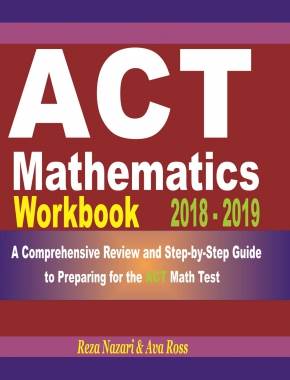How to Integrate By Parts: Step-by-Step Guide
Integration by parts is a technique in integral calculus that is used to integrate products of functions. It’s based on the product rule for differentiation and is especially useful when integrating the product of an algebraic expression and a transcendental function.
[include_netrun_products_block from-products="product/6-south-carolina-sc-ready-grade-3-math-practice-tests/" product-list-class="bundle-products float-left" product-item-class="float-left" product-item-image-container-class="p-0 float-left" product-item-image-container-size="col-2" product-item-image-container-custom-style="" product-item-container-size="" product-item-add-to-cart-class="btn-accent btn-purchase-ajax" product-item-button-custom-url="{url}/?ajax-add-to-cart={id}" product-item-button-custom-url-if-not-salable="{productUrl} product-item-container-class="" product-item-element-order="image,title,purchase,price" product-item-title-size="" product-item-title-wrapper-size="col-10" product-item-title-tag="h3" product-item-title-class="mt-0" product-item-title-wrapper-class="float-left pr-0" product-item-price-size="" product-item-purchase-size="" product-item-purchase-wrapper-size="" product-item-price-wrapper-class="pr-0 float-left" product-item-price-wrapper-size="col-10" product-item-read-more-text="" product-item-add-to-cart-text="" product-item-add-to-cart-custom-attribute="title='Purchase this book with single click'" product-item-thumbnail-size="290-380" show-details="false" show-excerpt="false" paginate="false" lazy-load="true"] [include_netrun_products_block from-products="product/6-south-carolina-sc-ready-grade-3-math-practice-tests/" product-list-class="bundle-products float-left" product-item-class="float-left" product-item-image-container-class="p-0 float-left" product-item-image-container-size="col-2" product-item-image-container-custom-style="" product-item-container-size="" product-item-add-to-cart-class="btn-accent btn-purchase-ajax" product-item-button-custom-url="{url}/?ajax-add-to-cart={id}" product-item-button-custom-url-if-not-salable="{productUrl} product-item-container-class="" product-item-element-order="image,title,purchase,price" product-item-title-size="" product-item-title-wrapper-size="col-10" product-item-title-tag="h3" product-item-title-class="mt-0" product-item-title-wrapper-class="float-left pr-0" product-item-price-size="" product-item-purchase-size="" product-item-purchase-wrapper-size="" product-item-price-wrapper-class="pr-0 float-left" product-item-price-wrapper-size="col-10" product-item-read-more-text="" product-item-add-to-cart-text="" product-item-add-to-cart-custom-attribute="title='Purchase this book with single click'" product-item-thumbnail-size="290-380" show-details="false" show-excerpt="false" paginate="false" lazy-load="true"]

Integration by parts is a versatile and powerful technique in integral calculus, enabling the integration of products of functions that are otherwise difficult to integrate. Understanding and applying this method effectively requires practice, particularly in choosing \( u \) and \( dv \) appropriately.
Formula of Integration by Parts
The formula for integration by parts is derived from the product rule of differentiation (\(d(uv) = u dv + v du\)) and is given by:
\( \int u \, dv = uv – \int v \, du \)
where \( u \) and \( dv \) are functions of \( x \).
Choosing \( u \) and \( dv \)
The choice of which part of the integrand to set as \( u \) and which as \( dv \) is crucial. A common strategy is to use the LIATE rule (Logarithmic, Inverse trigonometric, Algebraic, Trigonometric, Exponential functions), which suggests a priority order for choosing \( u \).
Steps in Integration by Parts
- Identify \( u \) and \( dv \): Split the integrand into two parts: \( u \) and \( dv \).
- Differentiate \( u \): Differentiate \( u \) to find \( du \).
- Integrate \( dv \): Integrate \( dv \) to find \( v \).
- Apply the Formula: Substitute \( u \), \( du \), and \( v \) into the integration by parts formula.
- Simplify: Simplify the expression and integrate the remaining integral if necessary.
Example:
Consider \(\int x \, e^x \, dx\).
- Choose \( u = x \) (Algebraic) and \( dv = e^x \, dx \) (Exponential).
- Differentiate \( u \) to get \( du = dx \).
- Integrate \( dv \) to get \( v = e^x \).
- Apply the formula: \( \int x \, e^x \, dx = x e^x – \int e^x \, dx \).
- Simplify: \( x e^x – e^x + C \).
Repeated Application
Sometimes, integration by parts must be applied more than once, especially if the resulting integral is still not straightforward. This is common with higher powers of \( x \).
Use in Definite Integrals
Integration by parts can also be applied to definite integrals. After applying the formula, evaluate the resulting expression at the upper and lower limits of integration.
Tabular Integration
For integrals requiring repeated applications, the tabular method, also known as the tabular integration by parts, can be a more efficient approach. This method organizes the differentiation of \( u \) and the integration of ( dv ) in a table format, streamlining the process.
Related to This Article
More math articles
- 8th Grade FSA Math Worksheets: FREE & Printable
- Number Properties Puzzle -Critical Thinking 2
- How to Write the Equation of Parabola?
- The Ultimate Middle School Math Course (+FREE Worksheets)
- The Ultimate HSPT Math Course (+FREE Worksheets & Tests)
- How to Use Models to Divide Whole Numbers by Unit Fractions?
- 4th Grade NDSA Math Worksheets: FREE & Printable
- How to Find Complementary, Supplementary, Vertical, Adjacent, and Congruent Angles?
- 4th Grade ILEARN Math Worksheets: FREE & Printable
- How to Combine Like Terms? (+FREE Worksheet!)


























What people say about "How to Integrate By Parts: Step-by-Step Guide - Effortless Math: We Help Students Learn to LOVE Mathematics"?
No one replied yet.